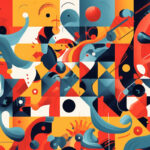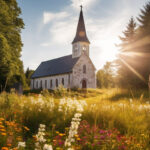Foraging is an exciting and rewarding activity that has been around for centuries. The art of finding and gathering wild edible plants and fungi has become increasingly popular in recent years, as people become more interested in connecting with nature and living off the land. Whether you’re a seasoned forager or just getting started, having the right resources is essential to your success. In this article, we’ll explore some of the best foraging books out there, so you can enhance your knowledge and find more wild edibles.

Why Foraging Books are Essential for Wild Food Enthusiasts
Foraging can be a fun and fulfilling experience, but it’s important to have the right knowledge and resources to ensure a safe and sustainable foraging experience. One of the best resources for any forager is a good foraging book. These books can provide you with a wealth of information on edible plants and fungi, as well as teach you about the ethics of foraging and sustainable harvesting practices.
Enhance Your Foraging Knowledge
There is always more to learn about foraging, and books like “The Forager’s Harvest” by Samuel Thayer can help expand your knowledge. Thayer’s book covers a wide range of topics, including plant identification, sustainable harvesting practices, and even recipes and cooking tips for some of the more common wild edibles. With this book, you’ll be able to confidently identify and harvest a variety of wild edibles.
If you’re looking for a more comprehensive guide to wild edible plants in North America, “Nature’s Garden” by Samuel Thayer is an excellent choice. This book provides detailed information on the identification, harvesting, and preparation of wild edibles, and Thayer’s writing style makes it easy to understand for beginners and experienced foragers alike.
Learn to Identify Edible Plants and Fungi
Identifying edible plants and fungi can be a challenge, but books like “Edible Wild Plants” by John Kallas can help. Kallas’ book provides detailed descriptions of over 250 wild edible plants, including their identification features, habitat, and edibility. With this book, you’ll be able to confidently identify a variety of wild edibles and know how to prepare them.
If you’re interested in foraging for mushrooms, “The Fungal Pharmacy” by Robert Rogers is a fantastic resource. This book covers over 300 species of medicinal and edible mushrooms, including their identification features and therapeutic uses. Rogers also includes detailed information on mushroom cultivation, making this book a great choice for anyone interested in growing their own mushrooms.
Understand the Ethics of Foraging
Foraging is an activity that should be practiced responsibly and ethically. That’s why it’s important to educate yourself on the ethics of foraging and sustainable harvesting practices. “Incredible Wild Edibles” by Samuel Thayer is a great resource for learning about the ethical considerations of foraging and the importance of preserving wild edibles for future generations.
Another great book for understanding the ethics of foraging is “The Wild Wisdom of Weeds” by Katrina Blair. This book not only covers wild edible plants but also delves into the many uses and benefits of weeds. Blair’s writing style is engaging and informative, making this book a joy to read. With this book, you’ll gain a deeper understanding of the interconnectedness of all living things and the importance of sustainable foraging practices.
Overall, investing in good foraging books is essential for anyone interested in wild food. These books provide a wealth of information on edible plants and fungi, teach you about the ethics of foraging and sustainable harvesting practices, and help expand your foraging knowledge. With the right resources and knowledge, you’ll be able to safely and responsibly enjoy the bounty of nature.
Top Foraging Books for Beginners
If you’re just getting started with foraging, there are plenty of great resources available to help you on your journey. Foraging can be a fun and rewarding way to connect with nature, learn new skills, and enjoy delicious, fresh food. However, it’s important to approach foraging with caution and respect for the environment.
“Foraging: A Beginner’s Guide” by David S. Nash is a great place to start. Nash’s book covers the basics of foraging, including plant identification, safe harvesting practices, and recipe ideas for some of the more common wild edibles. Nash emphasizes the importance of responsible foraging and provides tips for minimizing your impact on the environment.
The Forager’s Harvest by Samuel Thayer
As we mentioned earlier, “The Forager’s Harvest” by Samuel Thayer is another fantastic resource for beginners. Thayer’s book covers a wide range of topics, including plant identification, sustainable harvesting practices, and recipe ideas for some of the more common wild edibles. He also includes tips for foraging in different environments, such as forests and fields.
Thayer’s book is especially useful for those interested in learning about lesser-known wild edibles. He provides detailed descriptions and photographs of plants such as cattails, burdock, and groundnuts, and offers creative recipe ideas for incorporating them into your meals.
Edible Wild Plants by John Kallas
“Edible Wild Plants” by John Kallas is another great book for beginners. Kallas’ book covers over 250 wild edible plants, providing detailed descriptions of their identification features, habitat, and edibility. He also includes recipe ideas and cooking tips to help you make the most of your foraged finds.
Kallas’ book is particularly useful for those interested in the nutritional benefits of wild edibles. He provides information on the vitamins, minerals, and other nutrients found in various plants, as well as tips for incorporating them into a healthy diet.
Overall, these three books provide a great starting point for anyone interested in foraging. However, it’s important to remember that foraging can be dangerous if approached without proper knowledge and caution. Always be sure to properly identify plants before consuming them, and never harvest more than you need.
Best Foraging Books for Intermediate Foragers
If you’re an intermediate forager and looking to take your skills to the next level, there are plenty of great resources available. While you may have already learned to identify some of the more common wild edibles in your area, there is always more to discover. Here are a few books that can help you expand your knowledge and take your foraging to the next level.
Nature’s Garden by Samuel Thayer
“Nature’s Garden” by Samuel Thayer is a fantastic choice for intermediate foragers. This book covers a wide range of wild edible plants in North America, including many that you may not have encountered before. Thayer’s writing style is engaging and informative, making this book a joy to read. He also includes detailed information on each plant’s identification, harvesting, and preparation, as well as tips on how to incorporate these wild foods into your diet.
The Wild Wisdom of Weeds by Katrina Blair
If you’re interested in learning more about the many edible and medicinal weeds that grow in your area, “The Wild Wisdom of Weeds” by Katrina Blair is an excellent resource. Blair’s book covers a wide range of wild plants, including both weeds and wild edibles. She provides detailed descriptions of each plant and its uses, as well as recipe ideas and tips on how to incorporate these plants into your daily life. Blair’s passion for foraging and wild foods is contagious, making this book a pleasure to read.
Incredible Wild Edibles by Samuel Thayer
Another great resource from Samuel Thayer is “Incredible Wild Edibles.” This book covers a wide range of wild edibles and sustainable harvesting practices. Thayer’s writing style is clear and concise, and he includes detailed information on each plant’s identification, habitat, and edibility. He also provides recipe ideas and tips on how to preserve your foraged finds, so you can enjoy them all year round.
Whether you’re interested in expanding your knowledge of wild edibles, learning about sustainable harvesting practices, or simply looking for new recipe ideas, these books are sure to inspire and inform. Happy foraging!
Advanced Foraging Books for Expert Foragers
If you’re an expert forager, you may be looking for more advanced resources to further enhance your skills. While there are many books on foraging available, not all of them are suitable for experienced foragers. In this article, we will introduce you to some of the best-advanced foraging books that will help you take your skills to the next level.
The Fungal Pharmacy by Robert Rogers
“The Fungal Pharmacy” by Robert Rogers is a great choice for expert foragers who want to expand their knowledge of medicinal and edible mushrooms. Rogers covers over 300 species of mushrooms, providing detailed descriptions of each one, including their therapeutic uses and cultivation techniques. This book is an excellent resource for those who want to learn more about the medicinal properties of mushrooms and how to incorporate them into their health regimen.
In addition to its practical information, “The Fungal Pharmacy” is also a fascinating read. Rogers shares his personal experiences with mushrooms and their healing powers, making the book both informative and engaging.
Wild Edible and Medicinal Plants by Tom Brown Jr.
“Wild Edible and Medicinal Plants” by Tom Brown Jr. is another great resource for expert foragers. Brown’s book covers a wide range of wild plants, including edibles and medicinal plants. He provides detailed descriptions of each plant, as well as tips on how to use them for medicine and survival purposes.
What sets “Wild Edible and Medicinal Plants” apart is Brown’s emphasis on the spiritual and philosophical aspects of foraging. He encourages readers to connect with nature and develop a deeper understanding of the plants they are harvesting. This book is a must-read for anyone who wants to approach foraging as more than just a practical skill.
The North American Guide to Common Poisonous Plants and Mushrooms by Nancy J. Turner
For expert foragers, it’s important to be able to identify not just edible plants and mushrooms, but also poisonous ones. “The North American Guide to Common Poisonous Plants and Mushrooms” by Nancy J. Turner is a must-have resource for anyone who wants to safely navigate the world of wild edibles.
Turner’s book covers a wide range of deadly plants and fungi, providing detailed descriptions of their identification features and toxic properties. She also includes information on the historical and cultural uses of these plants, making the book both informative and engaging.
Overall, “The North American Guide to Common Poisonous Plants and Mushrooms” is an essential resource for expert foragers who want to stay safe while exploring the wilderness.
In Conclusion
Foraging is an exciting and rewarding activity that can provide you with a deeper connection to nature and a wealth of delicious and nutritious foods. Whether you’re a beginner or an expert forager, having access to good resources is essential. Hopefully, this list has provided you with some great options for foraging books that can enhance your knowledge and help you find more wild edibles.
Note: Please always consult experts before eating any foraged food and follow all guidelines in these books.
FAQs
What is foraging?
Foraging is the process of finding and collecting natural food from the wild.
What are the benefits of foraging?
Foraging can help you learn more about crop growth and health, safety in the wild, and edible foods. Additionally, it can help you feel more connected to nature and encourage you to practice mindfulness.
Should I introduce my kids to foraging?
Foraging can be a lovely activity for the family. Not only does it involve getting outside and feeling at one with nature but it also helps spark some interesting conversations.
- The 11 Best Books About Cats You Should Read - January 16, 2024
- The 9 Best Books on Building Confidence - January 16, 2024
- Discover the 10 Best Books on the Brain - January 16, 2024








